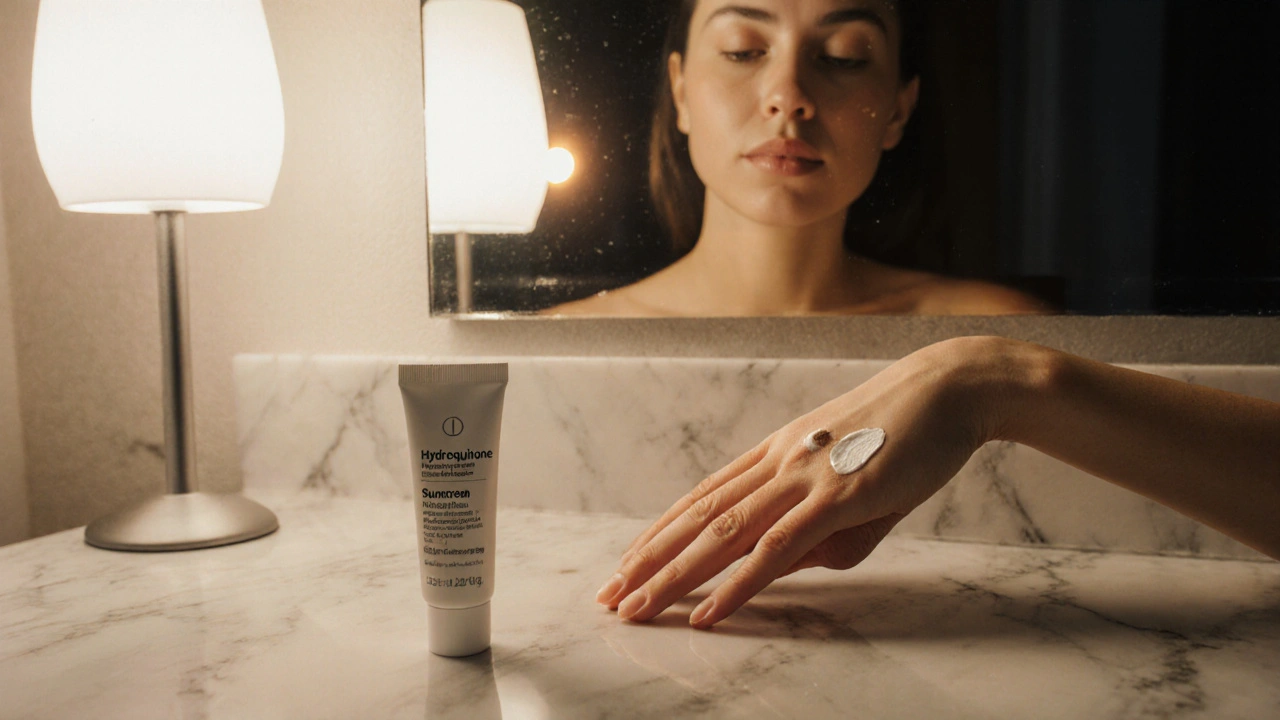How to Use Naloxone Nasal Spray for Opioid Overdose: Step-by-Step Guide
November 14 2025Dark Spot Alternatives: Natural and Medical Options That Actually Work
When it comes to dark spots, patches of uneven skin color caused by sun damage, acne scars, or hormonal changes. Also known as hyperpigmentation, these spots can show up anywhere—on your face, hands, or neck—and they don’t fade on their own. Many people reach for hydroquinone or strong bleaching creams, but those come with risks. The good news? There are effective, safer dark spot alternatives that work just as well—or better—without the side effects.
One of the most reliable alternatives is niacinamide, a form of vitamin B3 that reduces melanin transfer to skin cells. It’s gentle, non-irritating, and works well with other ingredients like vitamin C and azelaic acid. Another strong option is azelaic acid, a naturally occurring compound found in grains that calms inflammation and fades post-acne marks. It’s often prescribed for rosacea but is just as effective for stubborn dark spots. Then there’s tranexamic acid, originally a blood-clotting drug now used topically to block pigment-triggering signals in the skin. It’s especially helpful for melasma, the stubborn dark patches linked to hormones and sun exposure.
People often overlook natural options, but some have solid science behind them. licorice root extract, specifically glabridin, inhibits tyrosinase—the enzyme that makes melanin. It’s been used in Asian skincare for centuries and shows up in modern serums for good reason. kojic acid, made from fermented rice, is another classic lightener that’s gentler than hydroquinone. And don’t sleep on vitamin C, a powerful antioxidant that brightens skin and protects against UV damage that worsens spots. These aren’t magic, but when used consistently over weeks, they deliver visible results without burning or peeling your skin off.
What most people miss is that dark spots aren’t just a surface issue. They’re tied to inflammation, sun exposure, and even your skincare routine. Using harsh scrubs or skipping sunscreen makes them worse. The best results come from combining the right topical treatment with daily SPF 30+ and avoiding triggers like picking at acne. You don’t need a clinic visit or expensive laser to see improvement—just the right ingredients, used the right way.
Below, you’ll find real comparisons of top dark spot treatments—what works, what doesn’t, and what’s worth the money. From over-the-counter serums to prescription-grade options, we’ve broken down the science so you don’t waste time on products that promise miracles but deliver nothing.
 12 Oct
12 Oct
Melalite Forte Cream vs. Top Alternatives: Hydroquinone Spot Treatment Showdown
Explore how Melalite Forte Cream stacks up against top dark‑spot alternatives, covering effectiveness, safety, price, and best‑fit scenarios for every skin type.
Read More...




